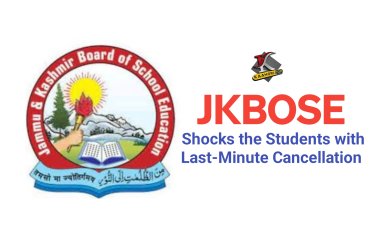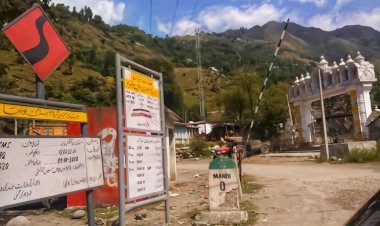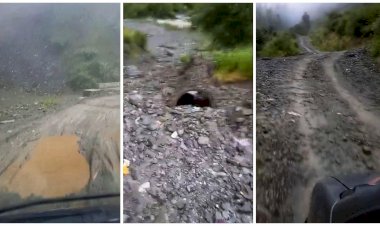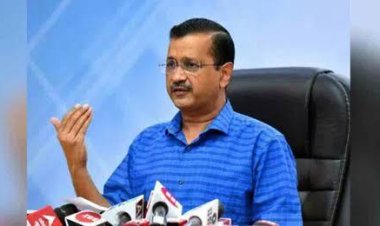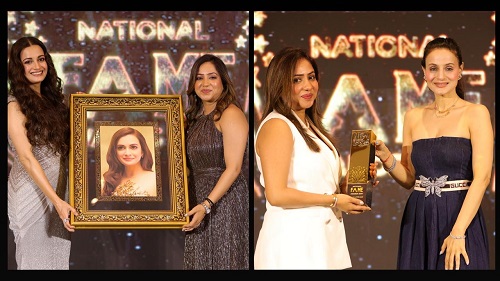Paharis of Chenab Valley! A Tale of Forgotten community
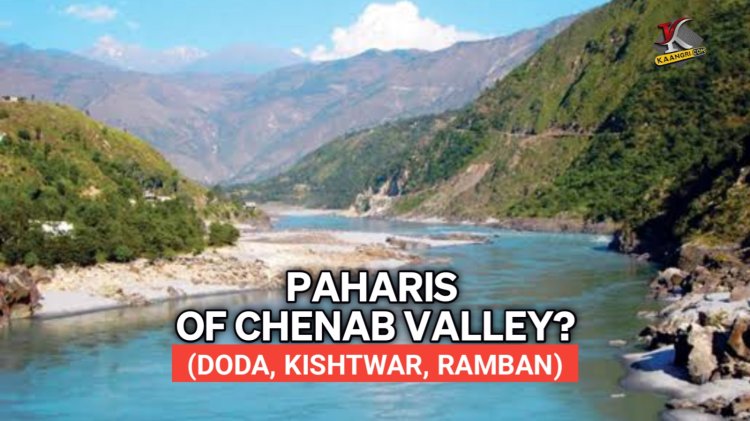
SADAKAT MALIK
Paharies of Doda Kishtwar Ramban : A tale of forgotten people An analytical study Sadaket Malik The chunk of population residing in Doda Kishtwar and Ramban speak Pahari languages and are ethnically, linguistically pahari as is evident from their cultural ethnic and linguistic background. The fact that dialects spoken here comes under the umbrella of Pahari viz Bhaderwahi, Bhalesi, Sarazi, Pogali a group of pahari language classified under Ist linguistic survey of India volume 8,9 (LSI and Census documents). The classification is done by the ist linguist Dr. GA Girerson in 1928.
According to the census 1901, the Bhaderwahi group included three dialects Bhaderwahi, Bhalesi and Padri and the number of speakers of these dialects were 25517. Bhaderwahi and Bhalesi are spoken in the Jagir of late Raja Amar singh. Bhalessa is now a days spoken in the three tehsils of Gandoh Chilly pingal and Kahara areas of Doda in Jammu and Kashmir. Padri is spoken in the padder area of kishtwar district and this also comes under this pahari grouping.
In Doda, Pahari is spoken by a significant population, as indicated by the census data from 2011. Pahari speakers are found in both rural and urban areas of the region. In the surveyed area, there were a total of 9,971 speakers of Pahari, with 5,139 residing in rural areas and 4,832 in urban areas. This demonstrates the distribution and presence of Pahari speakers across different settings within the Doda region.
According to the census data of 2011, a total of 81,999 individuals were identified as speakers of Bhadrawahi a western Pahari language. Within the rural areas, Bhadrawahi was spoken by 41,812 individuals, with 39,960 males and 38,506 females. Meanwhile, in urban locales, 40,187 individuals conversed in Bhadrawahi, comprising 18,852 males and 16,814 females. These statistics illuminate the widespread usage of Bhadrawahi across diverse demographics within the Doda region reflecting its cultural significance and linguistic vitality in the local community.
In Thathri, according to the census data from 2011, several mother tongues are spoken by the local population. Bhadrawahi is one of the prominent languages, with 22,528 individuals recorded as speakers, all residing in rural areas. Pahari is another language spoken in Thathri, with 244 speakers, also primarily in rural areas. Additionally, Kashmiri is prevalent, with 26,163 speakers.
Census 2011 reveal that in Bhalessa, two mother tongues prevail. According to the census data of 2011 Bhadrawahi is spoken by 3,627 individuals, and Kashmiri, spoken by 31,486 individuals In Kishtwar, a diverse range of mother tongues are spoken, as indicated by the census data from 2011. Some of the notable languages and their respective total numbers of speakers include: Assamese: 71 speakers, Bengali: 132 speakers, Dogri: 1,212 speakers, Gujarati: 49 speakers, Hindi: 64,141 speakers Bhadrawahi: 9,296 speakers, Gojri/Gujjari/Gujar: 33,127 speakers and Kashmiri: 158,228 speakers.
In Ramban According to the census data of 2011, a myriad of mother tongues echo through its valleys and villages. At the forefront stands Siraji, spoken by 16,853 individuals, reflecting the linguistic legacy deeply ingrained in the local community. languages like Gojri/Gujjari/Gujar, Dogri, and Hindi boast significant numbers of speakers, with 19,591, 29,078, and 69,993 individuals respectively. Each language serves as a linguistic bridge connecting communities and fostering a sense of identity amidst the breathtaking landscapes of Ramban. Furthermore, smaller languages such as Magadhi/Magahi, with 1,023 speakers,
In Banihal According to the census data of 2011, several languages are spoken by the local population. Notable among these are Dogri, with 633 speakers, and Hindi, with a significant presence of 6,816 speakers. Additionally, smaller languages such as Siraji, Rajasthani, and Dhundhari are also spoken.
The fact that Bhaderwahi Bhalesi and Padri, Sarazi and Pogali are western pahari languages spoken by both the communities. The people of these areas are not only linguistically identical but these speakers share common cultural values and ethnicity. Bhalesi a dialect of Pahari as enunciated by the Grierson and other linguists of the time is a spoken widely in Bhalessa (trio tehsils of Bhalessa - Gandoh, Chilly Pingal, Kahara and Basnota. As the distinctive ethnic classification of the languages the Bhalesi has been put in the category of the Western Pahari The Bhaderwahi group includes (Bhaderwahi-Bhalesi and Padri) keeping in view the lexical similarities of these dialects. Padri is spoken widely in Pader area of District Kishtwar whereas Bhaderwahi is spoken in Bhaderwah and Bhalessi in a wide area of three tehsils mentioned above.
Sarazi is another Western Pahari language spoken in chenab region. Grierson said it a western pahari language. Bailey (1908) was the first who presented a brief grammatical sketch of Sirazi in his book entitled “The Languages of the Northern Himalayas” published by the Royal Asiatic Society, London. Grierson (1919) presented a brief grammatical sketch of Sirazi in his “Linguistic Survey of India”.
Poguli is another unparalleled language. It is spoken in the Pogal paristan and adjoining the vast area of district Ramban and has rich phonological and lexical features. It has similarities with western Pahari and kashmiri. A link to the language of pahari and Kashmiri. Several linguists termed it as Pahari and came under the offshoot of Western Pahari. The poguli has close lexical similarities with other western pahari dialects. It is a pahari speaking dialect and is spoken by most of the people in Tehsil Banihal. Poguli is intermediate between Kashmiri and Western Pahari as per several surveys and studies.
The entire valley of chenab for which Frederick Drew called Pahari Dwellers speaks indigenous languages. Languages spoken in sub Himalayan (Middle mountains as the Fredric Drew calls) i.e erstwhile Doda Kishtwar and Ramban is having ethnic relevance. The Government of Jammu and Kashmir documents like [District Doda at a Glance 2016-17 Page 5] mentioned these dialects as Pahari. There is an exaggeration in statistics of the government bodies at the helm of affairs.
According to the J&K Board for Development of Pahari Speaking People (PSP) survey of 2018, Doda Kishtwar and Ramban has 0% of the Paharies. Whereas the statistics issued by the Census authorities say different. The following are the figures of the census of 2011. Both are contrary and the irony is that even census authorities have also wrong figures and classification of the pahari speaking people of Doda Kishtwar and Ramban.
The comparative statements of both the competent authorities are given in Tables. The J&K Board for Development of Pahari Speaking People (PSP) survey of 2018, says that Anantnag has 7.86% of Pahari speaking people, Budgam has 0.70%, Bandipore 4.33 percent, Baramulla 14%, Doda 0% (The borad forgotten the Western Pahari classified languages like Bhalesi, Sarazi and Bhaderwahi a large chunk of population of Pahari speaking people). The board in its surveys further reveal that Ganderbal has 5.88% of Pahari Speaking people, Jammu, Kargil, Ramban, Reasi, Samba, Kathua, leh and Kishtwar has no Pahari Speaking People, The again forgotten the Padari (Paddari) a Western Pahari offshoot) classified under the first linguistic Survey of India (LSI 1919) conducted by GA Grierson. The Board statistics further says that Kupwara has 11.84 percent, Pulwama has 1.59%, The Board of Parahi Speaking People which comes under the Social Welfare Department of Government of Jammu and Kashmir has interesting figures for Poonch and Rajouri and Shupiyan i.e 56.3 and 56.10% and 5.4 % pahari speaking people respectively which is totally differs the Census of India, Lingustic survey of India, and other researches. The fact that Pahari Boards survey reveal that there is 0% pahari speaking population which is contrary to the Census and other research documents like Linguistics survey of India. These figures have undermined the identity and basic rights of the people of Doda, Kishtwar and Ramban.
As far as the census of India 2011 is concerned, the statistics are quite different and contrary to the survey conducted by the J&K Board for Development of Pahari Speaking People (PSP). The census 2011 says that all the Paharies of Doda comes under Hindi or Dogri that is also ironic. The fact that Pahari is a distinct language under different catagories like western pahari, eastern pahari and central Pahari. The fact that Census has shown that Pahari and Bhaderwahi speaking are different. In Doda according to the census papers Bhaderwahi speaking people are 81999 and Pahari has 9971 population in Doda, 244 number of people speak Pahari in Thathri, and in Ramban Banihal there are 6816 PSPs.
The census has also said that people in Doda Kishtwar and Ramban also speak Magadhi, Dogri, Rajasthani, Haryanvi. The Census also revealed that Dhundhari, Dogri and Rajasthani is spoken in District Ramban. It is ironic that languages like Bhalessi, Saroori, Padri, Pogali, Bonjwali, Dachni, Deshwali have not been covered under the Census. One must be aware of a large chunk of ethnic populations who speak Pogali(Pougali) Bhalessa and Rambani, Zundhari, Neervi, Sarazi, Saroori, Dachni and Marvi etc which are mostly western pahari languages need to be covered under the ambit of the Census of India.
All these languages have been kept under pahari classification by G A Grierson and others like Dr. Sideshwer Varma, P K Koul, Dr SP Vaid, Bailey, Fredric Drew, Petterhook and even the government has admitted it in the district handbooks. There is therefore a need to identify all these languages which are pahari so that the indigenous language revitalization can be ensured as envisaged by the United Nations and the right of the people can be guaranteed to them on the basis of language, ethnicity and folklore.
Very recently, the SO 176 of 2024 issued by the government has made the eligibility for being a part of Pahari ethnic group. the SO 176 for Pahari ethnic group reads as under :
The government order revealed, "Provided further that a person claiming the benefit under the Pahari Ethnic Group category must be:-
(a) a member of the Pahari Clan, Community or Tribe having Distinct Cultural, Ethnic and Linguistic identity.
(b) she/he must be speaking the Pahari language and his/her mother tongue must be Pahari.
(c) she/he must produce Aadhaar Card/Voter Identity Card/Domicile Certificate.
(d) Further, Tehsildar, shall be the authority to certify the claim of persons belonging to said Category:
Provided also that the procedure for identification of persons claiming benefit as part of Paddari Tribe shall be as follows:-
a) a person claiming benefit as a member of Paddari Tribe shall substantiate her/his claim on the basis of revenue documents or any other documents establishing that she/he ancestrally belongs to the Paddar area of Kishtwar district.
b) she/he must produce Aadhaar Card/Voter Identity Card/Domicile Certificate.
c) Further, Tehsildar, shall be the authority to certify the claim of persons belonging to said Category.
The facts that the SO 176 has no mention of the area or a particular District or Districts. Since questions remain that whether People of Doda Kishtwar and Ramban who enjoy distinct Cultural, Ethnic and Linguistic identity (Pahari languages and ethnicity) shall also get benefitted from this move or not ? Is yet to be debated.
As far as revitalization of these languages is concerned Adoption decisions of the Jammu and Kashmir Academy of Art culture and languages on 21/09/2021 on the direction of the Honable LG for adoption of Bhaderwahi, Bhalesi Padri Paugali and Sarazi languages in response to the representation of the Pahari Core committee (A representative organisation of 15 literary groups) of chenab valley is yet to get implemented.
The erstwhile Doda the Pahari languages echo through the valleys, along with the Dhok culture and the primitive way of life prevalent in remote and less accessible areas. The distinctive culture is characterized by its close-knit communities and traditional practices, which have been preserved through generations. However, this cultural richness is often accompanied by a certain shyness towards contact with the wider community. Geographical isolation further reinforces this sense of seclusion, as many villages are far from urban centers.
Erstwhile Doda faces challenges stemming from its isolation and underdevelopment. The region grapples with general backwardness in various aspects, including infrastructure, education, and healthcare. Limited access to resources and opportunities exacerbates these challenges, hindering the socio-economic progress of its inhabitants. Now the Question still remains whether Pahari ethnic groups do exist in chenab valley or not ? and should SO 176 be applicable to this valley too ?


